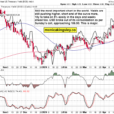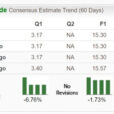Market Analysis
In the past, the USDA’s Small Grains report at the end of September has been a non-event. Very limited changes in US barley, oats and total wheat crops have been the rule over the years. Yet, possible changes within the various varieties of winter wheat and adjustments between spring and durum outputs may have occurred this year. Updates on planted and harvested areas for various varieties have also occurred. We aren’t looking for any big changes in harvested acres. However, reports of strong white wheat yields in PNW suggest this variety may have an 11 million bu. rise. Conversely, a slight rise in hard red output to 666 million (+5) probably will have a similar 5 million decline in soft red wheat to 287 million because of above normal summer heat in the eastern US. Overall, 2018’s US winter wheat could total 1.2 billion bu, up 11 million from August.
This year’s heat and dryness in the N. Plains and in particular in ND has already been noted by the USDA. NASS slipped ND’s corn (- 6 bu.) and soybean (- 2 bu.) yields on its September update earlier this month. Because of this trend, spring wheat’s output could decline by 4 million bu. and durum could slide by 1.5 million bu. Overall, this year’s spring varieties could total 682 million bu. and 2018’s overall wheat output could total 1.882 billion bu., up 5 million from August.
Despite tightening supplies on weather problems across many world growing areas, US wheat exports were disappointing at 195 million bu. last summer. This 97 million bu. a decline in demand along with competition for wheat’s feed demand in cattle’s feed bunk from corn, sorghum & DDGs may decrease wheat’s summer demand by 116 million bu. With 2018’s 1st quarter total sup-ply also up by 60 million, we are concerned about a dramatic jump in wheat’s Sept 1 stocks to 2.44 billion bu. vs. the trade’s 2.34 billion bu. expectations.













Leave A Comment